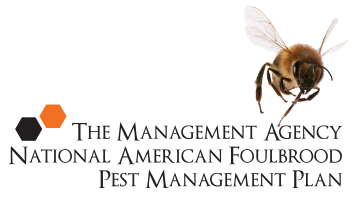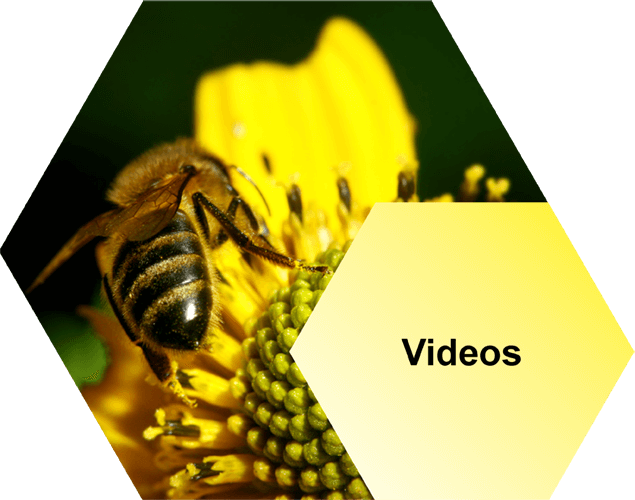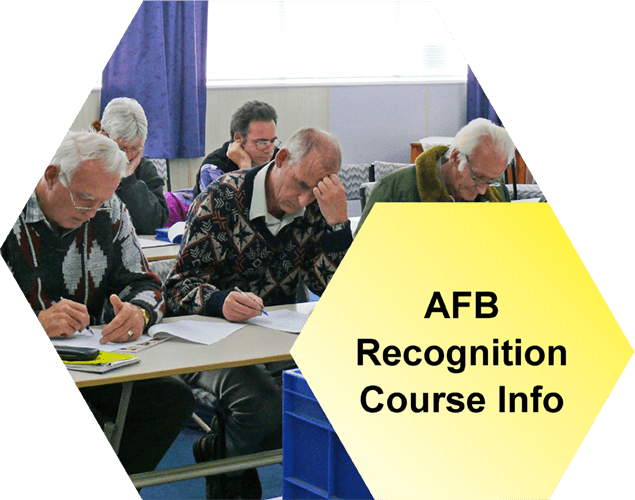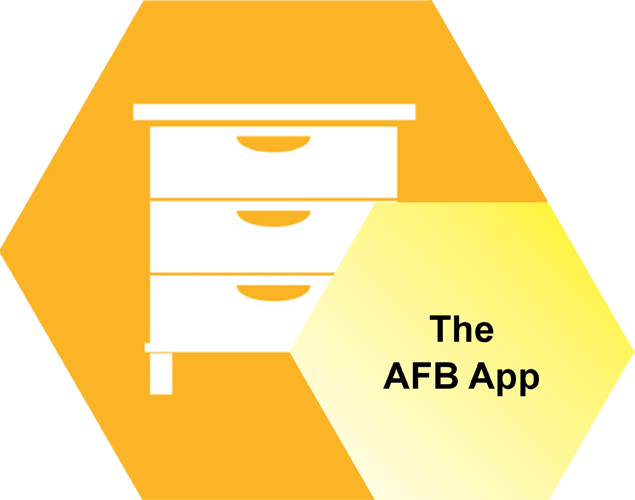Collecting samples
Suitable samples
There are a range of options to choose from.
Adult bees
The following procedure should be followed when taking adult bee samples:
- Open the hive and either find the queen or thoroughly inspect a brood comb to ensure the queen isn’t present
- Prop the brood frame up against the hive
- Open an unbreakable plastic jar and scoop it along the side of the frame to trap the bees inside
- Collect at least 30 bees. Put the lid on before the bees can fly out
- If a small plastic bag is used instead of a jar, hold the bag open with both hands and scrape up the comb to collect the bees. Twist the bag closed before the bees can fly out
- Alternatively the bees can be shaken off the frame into a bucket. The bees can then be quickly tipped into a jar or plastic bag
- Don’t collect bees off the honey supers as these are less likely to be contaminated with AFB spores
- Don’t worry about killing the bees. They will quickly suffocate in the sample container
- Samples must be kept cool and dispatched to the laboratory on the day they are collected, or frozen as soon as possible after collecting (preferably within 12 hours). Otherwise, non-AFB bacteria may grow in the sample and interfere with the laboratory test
- Do not send samples to the laboratory on a Friday or on the day before a public holiday, since the samples may grow non-AFB bacteria during the delay before delivery to the laboratory
Larvae/pupae
The following procedure should be used to take samples of larvae or pupae exhibiting AFB symptoms:
- Break the sulphur end off a matchstick and discard it since the sulphur may contaminate the sample
- Remove the suspect larva or pupa from the cell with the matchstick
- Place the larva/pupa in an unbreakable plastic jar or plastic bag
- Put samples from one hive in one jar/plastic bag. If possible, collect at least three larvae/pupae that are showing similar symptoms
- Take further samples from the hive until the jar/bag contains a representative sample of the AFB symptoms present in the hive
- Do not use the same jar/bag for samples from more than one hive, since this will make it difficult to identify the sample back to the individual hive
- It is good idea to put a match stick back in the suspect cell, since this will make it easy to find the cell again once the laboratory results are received
Comb
Comb samples are not recommended because the laboratory may not be able to identify the individual suspect cells on the piece of comb. Comb is also subject to crushing in the post. Comb should only be sent where there is no easily removed larval material (e.g. dried remains from a dead-out colony). In this case, it is best to take an entire frame as a sample.
Frames
The following procedure should be used to prepare samples of brood frames showing AFB symptoms:
- Choose frames with as little honey as possible
- Wrap the frame in sheets of newspaper. This will help to absorb any moisture that might otherwise leak out during mail shipment
- Put the wrapped frame in a plastic rubbish bag. Tie off the end, and then wrap the frame again in heavy wrapping paper
- Make sure the frame is couriered as soon as possible, since the comb will begin to grow mould that could interfere with the diagnosis.
Honey
Honey can be collected from individual hives, the extraction tank, or from a drum, and in either liquid or granulated form. Put at least 100g in an unbreakable plastic jar. If honey is taken directly from a hive, the comb scrapings do not need to be removed from the sample.
Take the AFB 5 minute quiz
How well do you know what you need to know about AFB and beekeeping? Take our short quiz and find out.
Videos
Our videos cover everything from your legal obligations to how to recognise AFB, collecting cell and bee samples and more.
Symptoms
There’s a lot of good information here, telling you everything you need to know about recognising AFB: the visual symptoms, smell of AFB and more.
Inspection and Diagnosis
Successfully eliminate AFB by telling the difference between symptoms of AFB and other brood diseases in the hive. We tell you the best methods for inspecting your hives.
The Law
New Zealand beekeepers have a number of legal obligations that must be met regarding AFB disease. Read the shortened list in summary, here.
Elimination
Most hives become infected because bees, honey or equipment have been put into a hive from another hive that is infected with AFB. Lower your chances of an AFB infection by reading this section.
AFB Recognition Course Info
Find out when the next AFB Recognition and Competency Courses, or Refresher Courses are available. These are held throughout the year in various New Zealand locations across the South Island and North Island.
The AFB App
Follow the link below to open the App. Once open to save to your device you need to bookmark the URL on your phone so you can find it easily again. Please click here to open.









